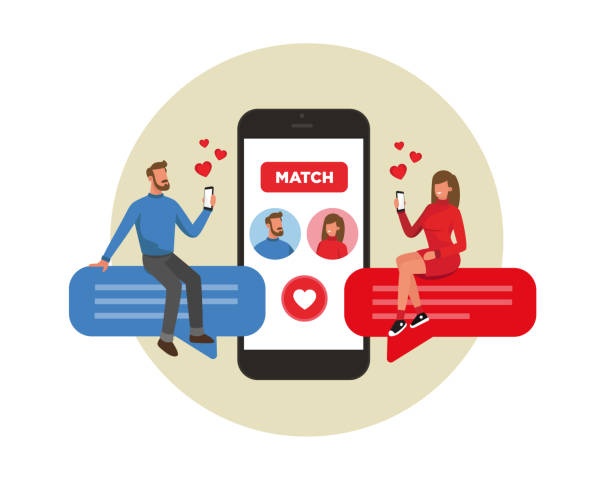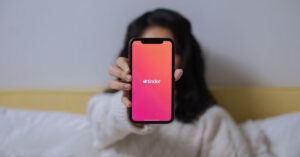With one swipe or click, many people today find their loved ones. This has centralised the popularity of matching profiles as a means of finding romantic relationships. Modern dating apps and sites, where thousands of worldwide connections stay in store, have turned things upside down, going against the conventional ways of looking for potential mates. But what makes two profiles a good match? Is it purely scientific, or is there some art to it? This article unfolds the complexities in matching profiles by covering, on the one hand, the technicalities of the issue and, on the other, the emotional part influencing the right relationship.
Algorithmic aspect of matching profiles
Most of the dating sites nowadays are using algorithms that will recommend matches. Algorithms use many different factors to evaluate compatibility between two people. Examples of critical criteria include the following:
Demographic and Basic Information
They normally begin with personal information, such as age, gender, and location. These are the bare filters that seem to narrow down the pool considerably to find people who are at least geographically and demographically suitable for you. This is particularly important on certain apps and websites targeting certain groups, such as professionals or people who are seeking casual dating or other long-term commitments.
Interests and preferences
One of the best profile-matching factors is the alignment of interests and hobbies. Most dating platforms require users to state their hobbies, favorite books, movies, or hobbies they like. The more overlap these regions have, the higher the chance that the algorithm is going to suggest a match. Thus, when two people enjoy hiking, the chances of being matched will be higher because two people like doing something in the wild.
Personality compatibility
One of the advanced dating sites goes ahead to include personality tests within their matching system. Often formed on psychological theories, for example, Myers-Briggs Type Indicator or Big Five personality, the personality assessments aim at determining among other things openness, agreeableness and emotion stability. On such matching based on personality traits, then the compatibility will be much more profound since it will ensure to transcend the superficial common interests.
Behavioral Data
Modern dating apps increasingly make use of behavioral data to improve their algorithms. They keep track of how the users are interacting inside the application, to which kinds of profiles they spend more time with, and whom they converse with. Behavioral data provides a more dynamic approach to matching profiles because it takes into consideration not only what is stated as preference but also actual behavior. For example, if a person frequently swipes right on the profiles of other persons with some common characteristic, then the algorithm is programmed to make similar profiles important while making further suggestions.
The craft of composing an excellent profile
While algorithms may be useful, the art of matching profiles lies in how users present themselves. A great profile is vital in order to get the right match, and here are the main elements that make for a great profile:
The Power of Profile Pictures
In the virtual community of dating, first impressions are very visual. The right profile picture either makes or breaks your chances in attracting certain matches. A study said that people are attracted to clean, high-quality photos where the subject is smiling and making eye contact. A photo can not be as effective if it’s a group picture, very heavily edited, or doesn’t clearly identify who it is.
Authenticity is also important. Although one might be tempted to put the best version of themselves forward on profiles, hugely filtered photos can also convey a sense of artificiality as well. A genuinely friendly image usually makes more of an impact for those seeking a meaningful connection.
Thoughtful bio
Second to picture profile, is bio-dating: where customers write out about who they are, their values and what they are looking for in a relationship. Very few of us are able to – or will be able to- walk that fine line between informative and accessible. Unique aspects of the person’s character, interests, and values ought to come across without being too rigid, formal, or worse, preachy.
In fact, most BIOSes have a dash of humor, creativity, or story involved. For example, “I like to hike” can be expressed in a much more captivating, personal style as follows: “Always up for an adventure—whether that be climbing a mountain or pizza. Try a new place.” This way, it adds the personal touch and invites further conversation.
Clarity and honesty
One of the biggest issues with online dating is that honesty goes against the desire to look as attractive as possible. Users who are candid and honest about their interests—be it a hook-up, relationship, or just talking to someone—really connect better with the right people.
Besides, this concept fosters trust within any relationship, which is needed for that relationship to grow and deepen.
Emotional attachment
Technologies and presentation are important for matching but, in a way, there’s that emotional and psychological feel that cannot be really quantified well by algorithms. Chemistry, intuition, and timing are all very vital elements of romantic relationships that don’t necessarily align with the suggestions of data-driven matching sites.
Chemistry Beyond the Profile
Matching Profiles
They look great on paper; in actual life, however, most cases have a different story. Human beings might find an instant connection with a person who does not necessarily fit into one of their boxes or they might not spark for what appears to be a perfect match. That is where the human element comes in—beyond what a profile may say or what an algorithm may suggest, there is that intangible quality of human interaction that plays the most important role in a successful relationship.
Communication
Communication follows the matching of profiles. Whether or not two persons hit it off depends on what happens between them after matching. In case of easy flow and freshness in conversation, that could be an indication they might work out. Same is the case with the communication style; heavy deep talks or light banter can make or break a potential match.

Timing and Preparation
The timing of matching profiles is also crucial. Depending on the circumstances in life, emotional readiness, and further personal development, an ideal person a few years ago might not turn out to be so for you today. Timing often gets overlooked in dating, yet it may often make all the difference for a successful match.
Future of Matching Profiles
The technology that will shape the future of matching profiles is convincing enough. With the advent of AI, big data, and machine learning, algorithms are becoming sharper, thus enhancing accuracy and personalization in matchmaking. Thanks to AI, one can look at humongous amounts of data and suggest compatible profiles based on voice patterns, social media activity, and sometimes even emotional expressions.
Virtual reality (VR) dating may be the future, where people can meet each other in a more immersive setting prior to actual, in-person contact. These might contribute to even greater accuracy and intuitiveness in the process of matching profiles.
Read More: Exploring the Alligator Dating Site: Where Reptilian Love Flourishes
Conclusion
Matching profiles is as much science as art. With algorithms and data-based approaches revolutionizing our finding of romantic partners, it is the human elements-feeling, chemistry, and communication-that shall always come into play as the fulcrum to a good match. And with the ever-evolving facet of technology, the drive to find right matches lies in this strike between scientific accuracy and the emotional scale. Whether it’s because of a shared interest, an interesting conversation, or a great photo, matching profiles are all about finding that someone who fills and enriches your life in ways you just can’t even imagine. Can’t predict.




